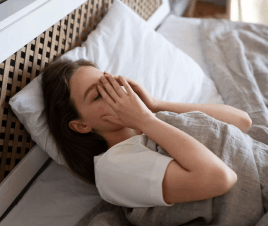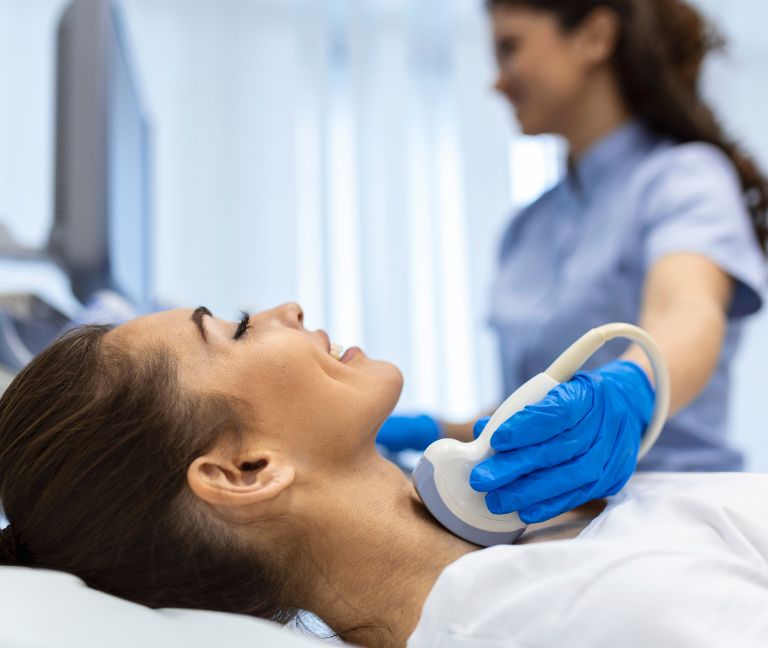The Importance of Exercise and Physical Therapy in Managing Orthopedic Conditions
Physical therapy in managing orthopedic conditions is life transforming. After surgery, an injury, an accident, or an illness, a qualified physical therapist (PT) at physiotherapy and rehabilitation center Dubai can help you resume your regular activities. This is because an orthopedic physical therapist has a particular focus on identifying and treating diseases that affect any component of your musculoskeletal system.
To properly treat your injury or disease, an orthopedic physical therapist (PT) understands the importance of exercise and strives to integrate all of your other physiological systems, particularly your neurological and cardiovascular systems, with your musculoskeletal system.
The Importance of Exercise and Physical Therapy in Managing Common Orthopedic Conditions
Orthopedic issues, such as pain in the shoulders, back, hips, or ankles, can result in serious bone and joint issues that can cause chronic pain and make it difficult to carry out daily tasks. As a first line of defense against orthopedic issues, the importance of exercise cannot be stressed enough. However, there are benefits of physical activity and easy exercises for orthopedic patients are recommended.
- Arthritis: Participating in joint-friendly physical exercise helps lessen the pain, function, mood, and quality of life associated with arthritis. Orthopaedic exercise with low impact on the joints, such as brisk walking, cycling, swimming, water aerobics, light gardening, group fitness programs, and dance are examples of low-impact aerobic activities.
- To know more about Arthritis management, watch Dr. Krishna Amit Kumar, Orthopaedic Specialists talk all about it here.
- Joint Pain: Joint pain and discomfort are lessened and fatigue is fought by exercise. Orthopaedic exercises that are done correctly can enhance fitness and health without causing joint damage. Exercise can improve quality of life when used in conjunction with a treatment plan.
- Back Pain: Maintaining as much physical activity as possible during the day and engaging in regular exercise for orthopedic patients are two of the most crucial things persons with low back pain can do. Exercises to build core strength as well as specific poses from yoga, pilates, and tai chi have all been shown to be beneficial.
- Sports Injuries: Boosting circulation and blood flow aids in the healing process. You are urged to move properly via rehabilitation exercises to prevent additional injury. Rehabilitative exercise also lessens inflammation and aids in avoiding issues like scar formation that can hinder mobility and healing.
Types of Physical Therapies that can Benefit Orthopedic Conditions
- Manual Therapy: The term "manipulative therapy" also refers to manual therapy, a kind of pain management that includes but is not limited to arthritis pain. By skillfully kneading or massaging troublesome areas, manual therapy manipulates your muscles and joints and increases blood flow to make you feel better.
- Exercise Prescription: Understanding the importance of exercise for orthopedic patients is crucial for preserving bone strength as we age as well as for developing strong bones when we are younger. Similar to how exercise strengthens muscles, it also strengthens bones. As bone is a living tissue, it adapts to the stresses that are applied to it. Regular exercise causes our muscles and bones to adapt by growing more dense, thick fibers in the muscles and more bone cells in the bones.
- Neuromuscular Re-education: One type of physical treatment that can be very helpful for injuries is neuromuscular re-education. But before incorporating it into your recovery strategy, you might want to learn more about this kind of therapy. The process of retraining your brain to normally control reflexes and voluntary muscle movements is known as neuromuscular re-education. Because numerous injuries induce nerve damage, this kind of therapy is essential.
10 Easy Exercises for Bone Health
Exercise 1
One of the best workouts for joint pain treatment is the quad set. Laying down on the ground with relaxed, extended legs is a good place to start. After holding the left leg flexed for five seconds, release it. After two sets of ten repetitions switch to the other leg. Your glutes and thigh muscles will become more toned if you perform the quad set daily.
Exercise 2
One exercise for easing thigh and hip pain is the seated hip march. With your left toe planted on the ground as you sit up straight in the chair, elevate your right foot, keeping your right knee bent. Hold the right leg for three seconds before lowering it gradually to the floor. Ten times through the exercise, switch legs.
Exercise 3
Exercises for knee extension are frequently suggested to regain knee strength and joint pain treatment. Then, tighten your thigh while remaining seated erect and keeping your leg straight. Pull your toes in towards you at this time. After maintaining the same position for 10 seconds, 15-20 times, continue the exercise.
Exercise 4
The quadriceps, the broad muscles on the front of the thigh that link to the bone below the knee joint, are strengthened by the leg raise exercise. With your toes pointed upward and your arms by your sides, lie on your back on the ground. One leg at a time is best, to begin with. Hold your leg straight, contract your leg muscles, and slowly push it up a few inches. Push down on your lower back while contracting your stomach muscles. Hold your leg for five seconds, then drop it as gradually as you can. After four times with the same leg, move to the other leg.
Exercise 5
As the name implies, the hamstring stretch exercise helps to stretch and strengthen your hamstrings, the muscles on the back of your leg that are directly attached to your knee. Legs bowed, lie down on the ground. Slowly raise one leg, bringing the knee up to your chest. To straighten your leg, place your hands behind your thigh. Once you feel the stretch, lift your straight leg back towards your head. Hold this posture for five to ten seconds. Bring your leg back to the ground by softly bending your knee.
Exercise 6
The Sit to Stand exercise promotes easy standing up by strengthening the hip and thigh muscles. Sit on the edge of the chair with your feet shoulder-width apart. Stand up with your feet in front of your knees. Stick out your behind while maintaining a straight back, then start to sit by bending forward at the hips. After lightly touching the chair with your back, stand up once more.
Exercise 7
To strengthen your hips and improve your balance, perform standing hip abductions. If necessary, balance yourself using a chair. Raise leg to the side with knee straight and toes pointing forward. Hold for two counts. Lower your leg gradually.
Exercise 8
To improve hip strength and range of motion, perform standing hip flexion. If necessary, balance yourself using a chair. Lift your knee till your thigh is parallel to the ground while maintaining a tall upper body. Hold for two counts. Lower your leg gradually.
Exercise 9
To improve hip flexibility and strength, perform standing hip extensions. If you require assistance, use a chair. Raise your leg behind you while keeping your knee straight. Stay put for two counts. Drop your leg gradually.
Exercise 10
Standing Y exercises help to straighten the spine and stretch the front of the chest. Put your feet hip-width apart and stance. front of the body with hands crossed. Thumbs facing backward, hands raised above the head. Gradually descend.
Tips for Integrating Exercise and Physical Therapy into Daily Life
When dealing with orthopedic conditions, we often neglect the importance of exercise, although it is crucial is maintaining joint health. You have to follow your exercise plan for it to be effective over time as well. You can incorporate orthopaedic exercise into your daily routine by using the following advice.
- Many people discover that signing up for a class or working out with friends makes it simpler to exercise frequently.
- To modify the workout regimen as needed, it is also a good idea to visit a doctor or physiotherapist for checkups.
- Not taking the stairs and never using the escalators or elevators (lifts).
- While on the phone, whether cordless or mobile, get up and move around.
Benefits of physical activity
Physical therapy not only works wonders in managing orthopaedic conditions, but keeps you fit for other illnesses that come along. Here are some beenfits of doing physical activity:
- Engaging in joint-friendly physical activity can enhance your quality of life, function, mood, and pain management if you have arthritis.
- Low-impact physical activities are better for joints because they impose less strain on the body and lower the chance of damage.
- In addition to helping people with arthritis, exercising helps manage and can also postpone the onset chances of other chronic illnesses including diabetes, heart disease, and obesity.
When Should you Consult with an Orthopedic Surgeon?
You could be unsure of whether to consult a doctor if you experience pain in your muscles, joints, or bones or if your joints are giving you trouble. We advise you to schedule an appointment with your doctor in an orthopedic hospital in Dubai for an examination if you experience any of the symptoms listed below.
- You experience discomfort, stiffness, or soreness that makes it difficult for you to carry out daily tasks and can be one of joint pain symptoms.
- You've got persistent aches (pain lasting longer than 12 weeks)
- Your range of motion is getting less.
- One of the joint pain symptoms is when you're standing or walking, you feel unsteady.
- You've experienced a soft tissue injury, and after 48 hours it hasn't gotten better.
FAQs
Why is exercise important for orthopedic patients?
What are the different exercises or physical activities that improve bone health?
What are the long-term effects of exercise on bones and joints?
Who are the best orthopedic surgeons in Dubai?
Your AsterDM Team
Orthopedic specialists at AsterDM Healthcare can help you live an active, pain-free life by diagnosing your condition and offering surgical and nonsurgical treatment options that can address any issues with your bones, muscles, ligaments, tendons, or joints.
For you to resume your favorite activities, our highly qualified team of doctors, advanced practice providers, therapists, and sports trainers work together to give a smooth experience from diagnosis through treatment and rehabilitation. To best meet your needs, AsterDM Healthcare offers personalized rehabilitation. At whatever age, we want to support you in staying as active as you can. We will collaborate with you to understand your condition and give you the tools and resources you need to manage it. Together with our highly qualified colleagues in occupational therapy and physical therapy, we execute these plans.
References:
- https://www.healthline.com/health/orthopedic-physical-therapy
- https://thcds.com/blog/5-simple-exercises-to-keep-orthopedic-problems-at-bay/
- https://www.cdc.gov/physical-activity-basics/benefits/
- https://www.mayoclinic.org/diseases-conditions/arthritis/in-depth/arthritis/art-20047971#:~:text=Examples%20of%20aerobic%20exercises%20that,that's%20easier%20on%20your%20joints.
- https://www.ncbi.nlm.nih.gov/books/NBK284944/#:~:text=Although%20exercise%20programs%20don't,pain%20attacks%20by%20almost%20half.
- https://www.pinnaclehealthchiro.com/blog/why-rehabilitative-exercise-after-an-injury-is-so-important#:~:text=Increasing%20blood%20flow%20and%20circulation,interfere%20with%20mobility%20and%20recovery.
- https://www.oneaccordpt.com/blog/how-can-manual-therapy-treat-arthritis-pain#:~:text=Manual%20therapy%2C%20also%20called%20%E2%80%9Cmanipulative,help%20you%20feel%20more%20comfortable.
- https://medcraveonline.com/MOJYPT/role-of-physical-exercises-in-common-orthopedic-conditions.html
- https://excelsportspt.com/four-benefits-of-neuromuscular-re-education-for-acl-injuries/#:~:text=Neuromuscular%20re%2Deducation%20is%20the,muscles%20in%20a%20coordinated%20way.
- https://americanbonehealth.org/exercises/
- https://www.beaumont.org/services/orthopedics/when-to-see-an-orthopedic-doctor





